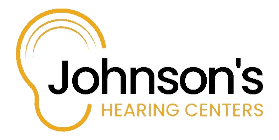Earwax, or cerumen, is a natural substance produced by the glands in the ear canal. It plays an important role in protecting the ear by trapping dust, debris, and microorganisms. Earwax also keeps the ear canal lubricated to prevent dryness and irritation.
However, sometimes, earwax can build up and cause blockage when there’s overproduction of wax or improper cleaning methods, such as using cotton swabs. When earwax accumulates excessively, it can lead to various hearing issues, including tinnitus.
The Connection Between Earwax and Tinnitus
Tinnitus is characterized by a persistent ringing, buzzing, or humming in the ears. While there are many potential causes, excessive earwax is a significant factor. When earwax builds up, it can press against the eardrum or block the ear canal, amplifying internal sounds and making tinnitus symptoms more pronounced.
Moreover, the blockage can cause a hearing loss that triggers or worsens tinnitus. When the brain doesn’t receive the usual sound signals, it may create its own noise in an attempt to fill the void. This phenomenon can lead to an increase in the perception of tinnitus.
Symptoms of Earwax Buildup
Recognizing the symptoms of earwax buildup is important for addressing the issue promptly. Common signs include earache, a feeling of fullness in the ear, and partial hearing loss. Sometimes, individuals may experience dizziness or even a cough due to the pressure exerted by the wax buildup.
Tinnitus is also a common indicator of earwax accumulation. The ringing or buzzing that accompanies this condition can vary in intensity and may affect one or both ears. Being aware of these symptoms can help in seeking timely intervention and management.
Safe Methods for Earwax Removal
Removing earwax safely is key to avoiding damaging the ear. Over-the-counter ear drops can be effective in softening the wax, making it easier to remove. These drops typically contain hydrogen peroxide or baby oil, which help dissolve the earwax gently.
Furthermore, irrigation kits are available for at-home use. These kits involve flushing the ear with warm water to dislodge the wax. However, it’s important to follow the instructions carefully to prevent any harm to the ear. If home remedies don’t work, seeking professional assistance is highly recommended.
Professional Earwax Removal
Hearing health professionals offer various safe and effective methods for earwax removal. Microsuction involves using a small, gentle vacuum to remove the wax without causing discomfort. This method allows for a precise and controlled removal process.
Another professional technique is manual removal using specialized instruments. Hearing health professionals and ear, nose, and throat (ENT) specialists are trained to perform this procedure safely, ensuring that the ear canal and eardrum remain unharmed. Seeking professional help ensures that the earwax is removed correctly and minimizes the risk of complications.
Preventing Earwax Buildup
Preventing earwax buildup involves adopting good ear hygiene practices. Avoid inserting objects such as cotton swabs or hairpins into the ears, as this can push the wax further in and cause blockages. Instead, gently clean the outer ear with a damp cloth.
Regular checkups with a hearing health professional can help monitor ear health and address any issues early. Using earwax-softening drops periodically can prevent accumulation. Maintaining these habits promotes healthy ears and reduces the likelihood of tinnitus exacerbation due to earwax buildup.


